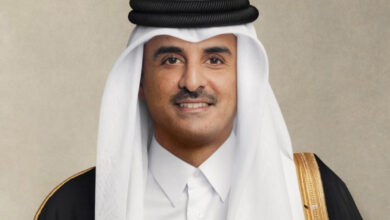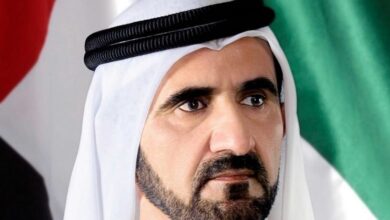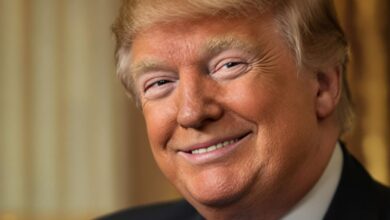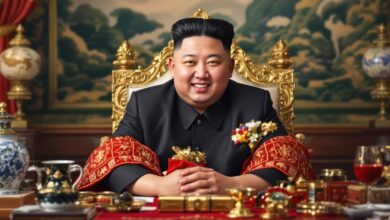Narendra Modi Net Worth: Insights into His Wealth and Financial Journey
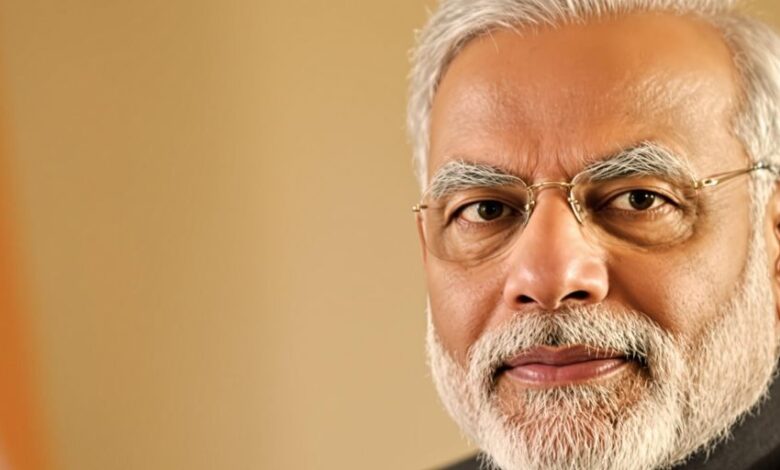
Ever wondered how much wealth the Prime Minister of India, Narendra Modi, has amassed over the years? Well, you’re not alone. Modi’s financial journey is as fascinating as his political career. From humble beginnings to leading the world’s largest democracy, his net worth has seen a significant evolution. In this article, we take a closer look at Narendra Modi’s net worth, exploring the elements that make up his financial portfolio and how it has evolved over time.
Key Takeaways
- Narendra Modi’s net worth has steadily increased, with a significant portion in fixed deposits.
- Modi prefers traditional savings methods over stock market investments.
- His personal assets include gold rings and a small share in a joint property.
- Modi’s financial transparency is evident through regular public declarations.
- Despite his wealth, Modi maintains a minimalist lifestyle, owning no car.
Understanding Narendra Modi’s Financial Portfolio
The Role of Fixed Deposits in Modi’s Wealth
So, let’s talk about Modi’s fixed deposits. It’s like he’s got a thing for them. Instead of diving into risky ventures or the stock market, Modi prefers the steady, predictable nature of fixed deposits. As of his latest financial declaration, a significant chunk of his wealth is tied up in fixed deposits at the State Bank of India. This method of saving is pretty old-school, but it’s worked for him, helping his net worth grow over the years. It’s all about that steady interest adding up, year after year.
Why Modi Avoids Stock Market Investments
Now, you might wonder why someone as influential as Modi stays away from the stock market. It’s not like he doesn’t have the means or the opportunity. The thing is, Modi seems to prefer keeping his finances simple and low-risk. Stocks can be volatile, and for someone in his position, stability is key. By steering clear of the stock market, he avoids the rollercoaster of ups and downs that come with it. This conservative approach might not be the most exciting, but it sure keeps things steady.
The Significance of National Savings Certificates
Then there’s the National Savings Certificates (NSCs). Modi has a decent amount invested in these government-backed savings schemes. They’re not just safe; they offer decent returns too. For Modi, NSCs are a reliable way to grow his savings without the stress of market fluctuations. Plus, they align perfectly with his risk-averse strategy. By investing in NSCs, Modi not only secures his wealth but also supports government initiatives, which is a win-win in his book.
In the grand scheme of things, Modi’s financial portfolio reflects a cautious, calculated approach. It’s about balancing growth with security, and so far, it seems to be working pretty well for him.
A Glimpse into Modi’s Personal Assets
The Story Behind Modi’s Gold Rings
Let’s talk about those gold rings. Narendra Modi, India’s Prime Minister, is known for his simple lifestyle, yet he owns four gold rings. These aren’t just for show; they hold a deeper meaning. Each ring is said to symbolize a specific aspect of his life or spiritual belief. With a total worth of around ₹2.68 lakh, these rings are a significant part of his personal assets. It’s fascinating how these small pieces of jewelry can reflect one’s values and beliefs. Modi’s choice to wear these rings regularly, despite his otherwise minimalist lifestyle, shows their importance to him.
Modi’s Real Estate Investments
Now, when it comes to real estate, Modi isn’t your typical politician with sprawling estates. In fact, he hasn’t bought any new property since taking office in 2014. His only real estate holding is a modest property in Gandhinagar, purchased way back in 2002. This property is worth about ₹1.1 crore, and he only owns a quarter of it. That’s right, just a quarter. It’s a joint property, which means he shares it with others. This limited real estate investment aligns with his public persona of being a leader who shuns extravagance.
Why Modi Doesn’t Own a Car
And then there’s the car situation. Or rather, the lack of it. Narendra Modi doesn’t own a car. You might wonder, how does a leader of his stature get around? Well, as Prime Minister, he has access to official vehicles, so there’s no personal need for a car. This decision might also be a statement of his commitment to public service and simplicity. By not owning a car, Modi reinforces his image as a leader who is more focused on serving the people than on personal luxuries. It’s an interesting choice that adds another layer to his unique approach to leadership and personal finance.
In the grand scheme of things, Modi’s personal assets might not be as extensive as one would expect for someone in his position. But that’s exactly what makes them intriguing. His lifestyle choices, from gold rings to his approach to real estate and cars, offer a unique insight into his values and priorities as a public figure.
The Evolution of Modi’s Net Worth Over the Years
How Modi’s Wealth Has Grown Since 2014
Since taking office in 2014, Narendra Modi has seen his net worth grow steadily. Initially, his assets were modest, but over the years, they’ve grown significantly. Much of this increase can be attributed to his smart financial strategies, like keeping substantial amounts in fixed deposits. These deposits have been a stable source of growth, especially in a country where the financial market can be quite volatile. For instance, his fixed deposits with the State Bank of India have seen a noticeable rise, contributing significantly to his overall wealth.
The Impact of Political Career on Modi’s Finances
Modi’s journey in politics has undoubtedly influenced his finances. Being the Prime Minister of a country as vast as India comes with its own set of financial perks, but Modi has managed to keep a clean record by avoiding risky investments like the stock market. His financial declarations show transparency, which is crucial for someone in his position. Despite the pressures of political life, Modi’s financial decisions appear to be guided by a sense of responsibility and integrity, which has helped maintain public trust.
Comparing Modi’s Wealth to Other Leaders
When you look at Modi’s net worth compared to other world leaders, it’s clear that he’s not among the wealthiest. His assets, while significant, are relatively modest compared to leaders of other major economies. This could be due to his lifestyle choices and his focus on public service over personal gain. Modi’s wealth is primarily tied to his savings and investments in government-backed schemes, which might not yield as much as other investment avenues but offer security and stability. This approach reflects his cautious nature and perhaps a desire to remain relatable to the common man.
Modi’s Approach to Wealth Management

The Importance of Transparency in Modi’s Financial Declarations
When it comes to financial transparency, Modi’s approach is pretty straightforward. Since Atal Bihari Vajpayee’s time, it’s been a thing for all Union ministers to declare their assets and liabilities every year. This move was all about making public life more transparent. And Modi? He’s stuck to that tradition like glue. Every year, he puts out a detailed declaration of what he owns and what he owes. It’s all out there for the public to see, on the PM’s website. This kind of openness is rare in politics, where many leaders prefer to keep their financial matters under wraps. But for Modi, transparency isn’t just a buzzword; it’s a practice. It gives the public a clear view of his financial standing, and that’s something that earns trust.
How Modi Manages His Financial Assets
Modi’s financial management style is as unique as his political career. He doesn’t dabble in the stock market or any risky ventures. Instead, he opts for safer, more traditional investments. His wealth is tied up in fixed deposits, National Savings Certificates, and a couple of insurance policies. It’s a conservative approach, but it works for him. This strategy reflects his cautious nature, preferring steady growth over the volatility of stocks. It’s like he’s saying, “Why risk it when you can keep it safe?” His financial portfolio is a mix of stability and security, echoing his political strategies.
The Influence of Modi’s Financial Decisions on Public Perception
How Modi handles his money says a lot about him, and people notice. His choice to steer clear of flashy investments and stick to the basics sends a message of simplicity and integrity. It’s a reflection of his public persona—no frills, just straightforward. The public sees a leader who’s not in it for the money, but for the service. This perception plays a big role in how people view him as a leader. In a world where politicians are often seen as out of touch, Modi’s financial decisions keep him grounded. They’re a reminder that his focus is on the country, not personal gain. This approach not only shapes his image but also influences how his policies are received by the public.
The Influence of Modi’s Policies on His Net Worth

How Modi’s Economic Policies Affect His Wealth
Alright, let’s break it down. Modi’s approach to economic policies is like a double-edged sword when it comes to his personal wealth. On one hand, he’s all about boosting India’s economy, which indirectly can bump up his own financial standing. Think about it: when the economy thrives, there’s more cash flow, more investments, and potentially more personal gains. But here’s the kicker—his policies are super focused on transparency and fighting corruption. This means he can’t exactly pull any sneaky moves to inflate his wealth without folks noticing. So, while his policies might create a richer environment overall, they also keep his own pockets in check.
The Connection Between Governance and Personal Finances
Now, governance and personal finances can be a tricky mix. Modi’s got this whole ‘lead by example’ thing going on. By pushing for clean governance, he sets a standard for how public figures should manage their money. It’s like he’s saying, “Hey, if I’m doing it right, you should too.” This approach means his financial records are out in the open for everyone to see. So, any growth in his net worth is usually slow and steady, not because of some secretive dealings but because he’s playing the long game. It’s all about showing that you can be in politics and still keep your finances above board.
Modi’s Financial Growth Amidst India’s Economic Changes
Modi’s financial story is kind of like watching a tree grow. It’s steady and takes time. Over the years, as India has seen its fair share of economic ups and downs, Modi’s net worth has been on a gradual climb. This isn’t about sudden windfalls; it’s more about consistent growth. His investments are pretty conservative—think fixed deposits and savings certificates—so they’re not going to skyrocket overnight. But they do provide a stable increase over time. As India’s economy evolves, so does Modi’s financial portfolio, reflecting the broader economic landscape without any wild swings.
Exploring Modi’s Income Sources
The Breakdown of Modi’s Salary as Prime Minister
So, let’s talk about Narendra Modi and his salary as the Prime Minister of India. You might think that being the PM comes with a hefty paycheck, but it’s not as extravagant as you might expect. Modi’s salary, as of the latest reports, is around ₹2 lakh per month. This includes his basic pay and a few allowances. When you add it all up, it’s not just about the money he takes home monthly, but also the perks that come with the job. These include housing, travel, and other official expenses covered by the government. It’s a package deal, really.
Additional Income Streams for Modi
Now, while the salary is the official income, Modi has some other sources that contribute to his wealth. But don’t jump to conclusions—it’s not what you think. Modi isn’t into stock market investments, which is quite interesting given how many politicians dabble in it. Instead, he prefers more traditional and safer options like fixed deposits and National Savings Certificates. These investments have been consistent over the years, providing him with a steady income stream. And let’s not forget about the occasional royalties he might receive from his books and public appearances. It’s not a fortune, but it adds up over time.
How Modi’s Income Compares to Other World Leaders
When you compare Modi’s income with other world leaders, it paints an interesting picture. Many leaders in Western countries, for example, earn significantly more. Take the U.S. President or the German Chancellor—they have salaries that are much higher. However, it’s not just about the paycheck. The cost of living, the perks, and the responsibilities all play a part in how these salaries stack up. Modi’s approach, focusing on simplicity and minimalism, reflects his lifestyle choices, which is quite different from the lavish lifestyles some leaders are known for.
The Role of Public Service in Modi’s Financial Journey
How Modi’s Political Career Shapes His Financial Decisions
Narendra Modi’s journey from a humble background to becoming the Prime Minister of India has been nothing short of remarkable. His political career has undeniably influenced his financial decisions in various ways. As a public figure, Modi has always maintained a transparent approach to his finances, ensuring that his actions align with his role as a leader. His decision to invest in national savings certificates and avoid the stock market reflects a cautious approach, prioritizing stability over high-risk ventures. This conservative financial strategy mirrors his political ideology of steady and sustainable growth for the country.
The Balance Between Public Service and Personal Wealth
Balancing public service with personal wealth is a tightrope walk for any leader, and Modi is no exception. His financial journey is a testament to his commitment to public service, often placing the nation’s needs above personal gain. Modi’s modest lifestyle, characterized by minimal personal assets and a focus on public welfare, underscores his dedication to serving the people. This approach not only enhances his credibility but also sets a standard for other public servants to follow. While his net worth has seen a gradual increase, it is primarily due to prudent investments rather than extravagant acquisitions, aligning with his public persona of simplicity and integrity.
Modi’s Commitment to Financial Integrity
Financial integrity has been a cornerstone of Modi’s public service journey. Since assuming office, he has consistently declared his assets, promoting transparency and accountability. This practice not only builds trust with the public but also reinforces his image as a leader committed to ethical governance. Modi’s financial integrity is further reflected in his policies, which aim to clean up the financial system and foster a culture of honesty and accountability. By prioritizing financial integrity, Modi not only secures his own legacy but also paves the way for a more transparent and accountable government. His financial journey, intertwined with his political career, serves as a model for balancing personal wealth with public responsibility.
Modi’s Financial Philosophy and Lifestyle
Living a Minimalist Lifestyle: Modi’s Choice
So, Narendra Modi is known for keeping things simple. He doesn’t own a car, which is kinda surprising for someone in his position, right? But that’s just how he rolls. Instead of splurging on flashy stuff, Modi sticks with the basics. His lifestyle is more about necessity than luxury. And, honestly, it’s refreshing to see a leader who practices what he preaches about simplicity and frugality.
The Impact of Modi’s Lifestyle on His Wealth
Modi’s minimalist approach isn’t just a personal choice; it also plays a big part in his financial situation. By not indulging in extravagant purchases, he’s managed to keep his expenses low, which obviously helps maintain his net worth. This approach has kept him financially stable, even as his political career has skyrocketed. It’s like he’s saying, “Hey, you don’t need a ton of stuff to be successful.”
How Modi’s Personal Beliefs Influence His Financial Choices
Now, let’s talk about how his beliefs shape his financial decisions. Modi’s all about transparency and accountability, and that’s clear in how he handles his money. He’s not into risky investments or stock markets. Instead, he goes for things like national savings certificates and fixed deposits. It’s all about security and reliability for him. This cautious strategy reflects his broader philosophy of governance, where reducing corruption and promoting clean financial practices are key priorities. His choices are not just about personal gain; they align with his vision for a transparent and accountable leadership. It’s like his financial life is a mirror of his political values.
The Future of Modi’s Financial Legacy
Predictions for Modi’s Net Worth in the Coming Years
Looking into the future, Modi’s financial legacy is likely to be shaped by his continued focus on traditional, low-risk investments. His preference for fixed deposits and government-backed savings schemes, like the National Savings Certificates, suggests a steady but modest growth in his net worth. As of his latest declaration, Modi’s net worth is around ₹3.07 crore, an increase of ₹22 lakh from the previous year. This trend indicates a gradual rise, primarily driven by interest accruals and small increments in his existing assets.
The Potential Impact of Modi’s Policies on His Financial Future
Modi’s economic strategy has always been closely tied to his governance policies. His investments in infrastructure and efforts to streamline bureaucratic processes have the potential to improve the overall business environment in India. However, it’s crucial to note that these policies aim to benefit the nation rather than directly impacting his personal wealth. The focus on transparency and accountability in his financial dealings ensures that his wealth remains separate from his political actions. As India continues to develop, Modi’s policies might indirectly enhance his financial standing by fostering a stable and prosperous economic environment.
How Modi Plans to Secure His Financial Legacy
Modi’s approach to securing his financial legacy seems to be grounded in simplicity and transparency. He has consistently avoided high-risk investments like the stock market, opting instead for secure options that offer reliability over quick gains. This conservative strategy not only protects his assets but also aligns with his public persona of modesty and integrity. As he continues to lead India, Modi’s financial legacy will likely reflect his commitment to ethical governance and personal integrity, ensuring that his financial journey remains a testament to his values and leadership style.
The Public’s Perception of Modi’s Wealth

How Modi’s Wealth is Viewed by the Indian Public
Narendra Modi’s wealth is a topic that often sparks curiosity and debate among the public. Many people see him as a man of modest means, especially compared to other political figures. His financial transparency, with regular updates on his assets, paints a picture of simplicity. Yet, there’s a mix of admiration and skepticism. Some folks appreciate his straightforward lifestyle, while others wonder if there’s more beneath the surface.
The Media’s Role in Shaping Perceptions of Modi’s Finances
The media plays a big role in how people perceive Modi’s wealth. News outlets frequently report on his financial declarations, sometimes highlighting the lack of flashy assets like luxury cars or sprawling estates. This portrayal can reinforce the image of a leader who is not driven by material wealth. However, media narratives can also stir controversy, especially when they touch on Modi’s relationship with Gautam Adani, which some believe influences his financial standing.
Public Reactions to Modi’s Financial Declarations
Whenever Modi releases his financial declarations, the public reactions are a mixed bag. Some people praise his openness and commitment to transparency. Others, however, question the authenticity of these reports. There’s a segment of the population that remains suspicious, believing that not all assets are disclosed. This skepticism is fueled by ongoing discussions about how closely Modi’s personal finances are tied to his political decisions and affiliations.
Modi’s Financial Transparency and Accountability
The Importance of Financial Declarations for Public Figures
When it comes to public figures, especially those in positions of power, transparency in financial matters is a big deal. Narendra Modi, India’s Prime Minister, makes sure to set an example by regularly declaring his assets and liabilities. This tradition, which started during Atal Bihari Vajpayee’s term, aims to promote openness and trust among the public. Modi’s financial declarations, available on the PM’s website, give a peek into his wealth, which includes fixed deposits, some gold rings, and a joint residential property. Despite the complexities involved in evaluating the assets of such prominent figures, Modi’s commitment to transparency is evident.
How Modi Ensures Transparency in His Financial Dealings
Modi’s approach to financial transparency is straightforward. Every year, he publicly shares details about his financial status. This includes everything from his bank balance to his investments in National Savings Certificates and life insurance policies. By doing so, he not only complies with the norms but also reassures the public about his financial integrity. It’s interesting to note that Modi doesn’t own a car or have any stock market investments, focusing instead on more traditional and secure forms of saving. This level of transparency helps build trust and counters any speculation about hidden wealth.
The Role of Accountability in Modi’s Financial Management
Accountability goes hand in hand with transparency. Modi’s financial management reflects a clear sense of responsibility to the public. By keeping his financial dealings open and accessible, he sets a benchmark for other leaders. His approach highlights the significance of being answerable to the people, ensuring that his financial journey is not just about personal gain but aligns with his role as a public servant. This accountability is crucial, especially in a country where the gap between the rich and poor is significant, and it helps in maintaining a positive public perception of his leadership.
Wrapping It Up
So, there you have it, a peek into the financial world of Narendra Modi. It’s kinda fascinating, right? I mean, here’s a guy who’s leading one of the biggest countries in the world, and his financial portfolio is pretty straightforward. No flashy cars or big mansions, just some fixed deposits and a few gold rings. It’s like he’s keeping it real, focusing on the job rather than the bling. Whether you’re a fan or not, you gotta admit, it’s interesting to see a leader with such a simple financial setup. Anyway, that’s the scoop on Modi’s net worth. Hope you found it as intriguing as I did!
